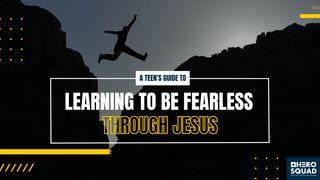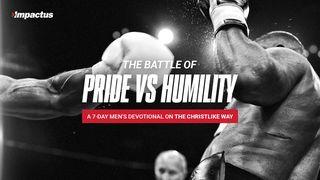Jesus' Final Visit to JerusalemSample

The Trial before Pilate
And the entire council took Jesus to the headquarters of Pilate, the Roman governor.
His accusers didn’t go inside because it would defile them, and they wouldn’t be allowed to celebrate the Passover. So Pilate, the governor, went out to them and asked, “What is your charge against this man?”
“We wouldn’t have handed him over to you if he weren’t a criminal!” they retorted
.“Then take him away and judge him by your own law,” Pilate told them.
“Only the Romans are permitted to execute someone,” the Jewish leaders replied. (This fulfilled Jesus’ prediction about the way he would die. 39)
They began to state their case: “This man has been leading our people astray by telling them not to pay their taxes to the Roman government and by claiming he is the Messiah, a king.”
Then Pilate went back into his headquarters and called for Jesus to be brought to him. Now Jesus was standing before Pilate, the Roman governor. So Pilate asked Jesus, “Are you the king of the Jews?”
Jesus replied, “You have said it. Is this your own question, or did others tell you about me?”
“Am I a Jew?” Pilate retorted. “Your own people and their leading priests brought you to me for trial. Why? What have you done?”
Jesus answered, “My Kingdom is not an earthly kingdom. If it were, my followers would fight to keep me from being handed over to the Jewish leaders. But my Kingdom is not of this world.”
Pilate said, “So you are a king?”
Jesus responded, “You say I am a king. Actually, I was born and came into the world to testify to the truth. All who love the truth recognize that what I say is true.”
“What is truth?” Pilate asked. Then he went out again to the people and told them, “He is not guilty of any crime.”
Then the leading priests kept accusing him of many crimes. But when the leading priests and the elders made their accusations against him, Jesus remained silent. And Pilate asked him, “Aren’t you going to answer them? Don’t you hear all these charges they are bringing against you?” But Jesus made no response to any of the charges, much to the governor’s surprise.
Pilate turned to the leading priests and to the crowd and said, “I find nothing wrong with this man!”
Then they became insistent. “But he is causing riots by his teaching wherever he goes—all over Judea, from Galilee to Jerusalem!”
“Oh, is he a Galilean?” Pilate asked. When they said that he was, Pilate sent him to Herod Antipas, because Galilee was under Herod’s jurisdiction, and Herod happened to be in Jerusalem at the time.
Herod was delighted at the opportunity to see Jesus because he had heard about him and had been hoping for a long time to see him perform a miracle. He asked Jesus question after question, but Jesus refused to answer. Meanwhile, the leading priests and the teachers of religious law stood there shouting their accusations. Then Herod and his soldiers began mocking and ridiculing Jesus. Finally, they put a royal robe on him and sent him back to Pilate. (Herod and Pilate, who had been enemies before, became friends that day.)
Then Pilate called together the leading priests and other religious leaders, along with the people, and he announced his verdict. “You brought this man to me, accusing him of leading a revolt. I have examined him thoroughly on this point in your presence and find him innocent. Herod came to the same conclusion and sent him back to us. Nothing this man has done calls for the death penalty. So I will have him flogged, and then I will release him.”
Now it was the governor’s custom each year during the Passover celebration to release one prisoner to the crowd—anyone the people requested. This year, one of the prisoners at that time was a notorious prisoner, a man named Barabbas, a revolutionary. (Barabbas was in prison for taking part in an insurrection in Jerusalem against the government, and for murder.) The crowd went to Pilate and asked him to release a prisoner as usual.
As the crowds gathered before Pilate’s house that morning, he asked them, “You have a custom of asking me to release one prisoner each year at Passover. Which one would you like me to release to you—Barabbas, or Jesus who is called the Messiah, this ‘King of the Jews’?” (For he knew very well by now that the religious leaders—the leading priests—had arrested Jesus out of envy.)
But they shouted back, “No! Not this man. We want Barabbas!”
Just then, as Pilate was sitting on the judgment seat, his wife sent him this message: “Leave that innocent man alone. I suffered through a terrible nightmare about him last night.”
Meanwhile, the leading priests and the elders stirred up the crowd to demand the release of Barabbas instead of Jesus, and for Jesus to be put to death. So the governor asked again, “Which of these two do you want me to release to you?”
The crowd shouted back, “Barabbas!”
Pilate asked them, “Then what should I do with this man Jesus who is called the Messiah, the king of the Jews?”
They shouted back, “Crucify him!”
“Why?” Pilate demanded. “What crime has he committed?”
Then a mighty roar rose from the crowd, and with one voice they shouted, “Kill him! Crucify him, and release Barabbas to us!” Pilate argued with them because he wanted to release Jesus. But they kept shouting, “Crucify him! Crucify him!”
For the third time, he demanded, “Why? What crime has he committed? I have found no reason to sentence him to death. So I will have him flogged, and then I will release him.”
Then Pilate ordered Jesus flogged with a lead-tipped whip.40 Some of the governor’s soldiers took Jesus into the courtyard of the governor’s headquarters (called the Praetorium) and called out the entire regiment. They stripped him and put a purple 41 robe on him. The soldiers wove thorn branches into a crown of thorns and put it on his head, and they placed a reed stick in his right hand as a scepter. Then they dropped to their knees before him in mock worship, saluted him, and taunted, “Hail! King of the Jews!” as they slapped him across the face. And they spit on him and grabbed the reed stick and struck him on the head with it.
Pilate went outside again and said to the people, “I am going to bring him out to you now, but understand clearly that I find him not guilty.” Then Jesus came out wearing the crown of thorns and the purple robe. And Pilate said, “Look, here is the man!”
When they saw him, the leading priests and Temple guards began shouting, “Crucify him! Crucify him!”
“Take him yourselves and crucify him,” Pilate said. “I find him not guilty.”
The Jewish leaders replied, “By our law, he ought to die because he called himself the Son of God.”
When Pilate heard this, he was more frightened than ever. He took Jesus back into the headquarters again and asked him, “Where are you from?” But Jesus gave no answer. “Why don’t you talk to me?” Pilate demanded. “Don’t you realize that I have the power to release you or crucify you?”
Then Jesus said, “You would have no power over me at all unless it were given to you from above. So the one who handed me over to you has the greater sin.”
Then Pilate tried to release him, but the Jewish leaders shouted, “If you release this man, you are no ‘friend of Caesar.’ Anyone who declares himself a king is a rebel against Caesar.”
When they said this, Pilate brought Jesus out to them again. Then Pilate sat down on the judgment seat on the platform that is called the Stone Pavement (in Hebrew, Gabbatha). It was now about noon on the day of preparation for the Passover. And Pilate said to the people, “Look, here is your king!”
“Away with him,” they yelled. “Away with him! Crucify him!”
“What? Crucify your king?” Pilate asked.
“We have no king but Caesar,” the leading priests shouted back.
Pilate saw that he wasn’t getting anywhere and that a riot was developing. So he sent for a bowl of water and washed his hands before the crowd, saying, “I am innocent of this man’s blood. The responsibility is yours!”
And all the people yelled back, “We will take responsibility for his death—we and our children!”
The mob shouted louder and louder, demanding that Jesus be crucified, and their voices prevailed. So to pacify the crowd, Pilate released Barabbas—the man in prison for insurrection and murder—to them, as they had requested. Pilate sentenced Jesus to die as they demanded and turned Jesus over to them to do as they wished.
Pilate turned him over to the Roman soldiers to be crucified. When they were finally tired of mocking him, they took off the purple robe and put his own clothes on him again.
Footnotes:
39 See John 12:32-33.
40 In Matthew and Mark, the events pertaining to Jesus’ treatment by the soldiers are presented after Jesus had been sentenced and handed over for crucifixion. Because of the similarities in this section between Matthew, Mark, and John, and since John provides a fuller account of Jesus’ trial before Pilate, the accounts of Jesus being flogged and mocked by the soldiers have been combined at this point, where these events occur in John.
41 Matthew reads scarlet.
About this Plan

God with Us: The Four Gospels Woven Together in One Telling is a captivating new book that looks and feels like a paperback novel. But it’s not a story based on Jesus’ life, with fictionalized embellishment. It is the story of Jesus’ life, told entirely in the words of the four Gospels in the New Living Translation. This reading plan is not the full account of God with Us but takes you through select events during Jesus’ final week as he visits Jerusalem for the last time leading up to his death and resurrection.
More
We would like to thank Tyndale Bibles for providing this plan. For more information, please visit: https://www.tyndale.com/p/god-with-us/9781496465061
Related Plans

Debt-Free by 31: 3 Biblical Keys That Made It Happen

A Teen's Guide To: Learning to Be Fearless Through Jesus

The Power of Gratitude

The Battle of Pride vs. Humility

Radical Relaxation: Your 5-Day Stress Release Plan

Satan, You Can’t Rule My Emotions

Healing Family Relationships Through Forgiveness

Lessons From Donkeys

From Lament to Hope: Wellbeing and Happiness in the Psalms
